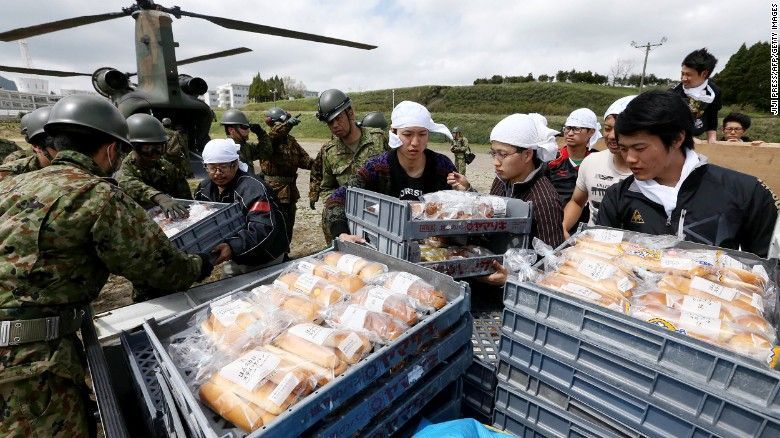
At least nine people died when an earthquake shook southwestern Japan's Kyushu island Thursday April 16th. Search crews scrambled to dig through rubble looking for people trapped under collapsed buildings.The magnitude-6.2 quake struck near Ueki, the U.S. Geological Survey said. Dozens of smaller aftershocks followed.
The Health and Welfare Co-operative Federation of Japan (Hew CO-OP) has sent donations, has dispatched doctors, and is sending supplies to the Kumamoto disaster zone. Talks are taking place to take joint action with university and consumer co-ops to help Kumamoto.
The Japanese Health and Welfare Co-operative Federation (HeW Co-op Japan) was founded in 1957, not long after the Second World War. HeW was initially a department of the Japanese Consumer’s Co-operative Union (JCCU), but became independent in 2010 and now has 112 member societies, including the JCCU itself. It works to network together Japan’s medical and welfare cooperatives, share knowledge, recruit and nurture medical and welfare staff, produce publications and coordinate the bulk purchasing of medical supplies.
The federation’s mission of helping those who might struggle to access good medical care has not changed over the past half century. For example, when the east coast of Japan was devastated by a 9.0-magnitude earthquake followed by a powerful tsunami in March 2011, HeW Co-op Japan asked its member cooperatives nationwide to send doctors and nurses to a hub hospital in severely affected Miyagi. After the first three weeks of emergency assistance, HeW cooperatives sent the medical staff to support the evacuation centres in each prefecture. Support services included providing mental-health support and health checks for the evacuees.
On a more regular, day-to-day basis, the health cooperatives are working to keep their members and the rest of the community healthy, using a participation model unique to Japan. Japanese consumer cooperatives have established a method of member participation based on small neighbourhood groups called han. In HeW’s cooperatives, three or more members can organize a han group, which carries out self-checking activities such as blood pressure, urine and fat testing, with the collaboration of medical specialists. There are 30,000 hans in health and welfare cooperatives around Japan, with 240,000 members.
Members are also encouraged to participate in voluntary activities, for example helping people in need in hospitals, organizing gatherings for elderly people who live on their own or promoting healthy ways of life. One of HeW’s members, Saitama Co-operative, is located in Saitama prefecture, north of Tokyo, the most rapidly aging area nationwide and also the area with the lowest density of physicians.
Saitama’s members are particularly active in bringing health promotion to the community through voluntary activities. Cooperative members are responsible for all the decision-making for activity plans, and they design and implement events themselves. For World Health Organization (WHO) World Health Day, they went out on the streets to measure blood pressure and body fat, while for WHO No Tobacco Day cooperative members, together with doctors and nurses, again took to the streets to conduct questionnaires and provide advice on quitting smoking. Cooperative members also organize free activities like walking, exercising, dancing and yoga in public facilities and parks, with over 500 events every month. The majority of participants are aged between 50 and 70.
Network building across generations is an important element of the cooperative members’ activities. They plan and organize community programmes, hosting events like tea parties with homemade food, handicraft workshops and singing and game sessions in their own houses or public places, with the aim of preventing social isolation and developing a stronger community. They also run activities based on the WHO concept of Age-Friendly Cities, conveying residents’ voices to the local government. Their achievements include having a wheelchair-accessible underground passageway built.
With estimates claiming that by 2060, 40% of Japan’s population will be aged 65 or over, the activities of HeW cooperative members can only become increasingly important.




